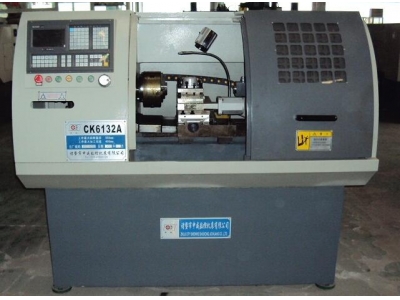一、html課程設計目的?
寫一下你制作的網站是用來干嘛的,比如你做了一個美食網,那你就可以介紹你制作的目的是為了讓大家品嘗到一些好的食物豐富大家的物質需求。
二、eda課程設計的設計目的?
1.
課程設計目的與任務 本課程設計是在學完EDA技術課程后的必修課程,它的教學目的和...
2.
課程設計基本要求 本課程設計,采用以學生自主設計為主教師指導為輔的原則,...
3.
課程設計選題原則 所選題目應是社會生活、生產中常見的、學生易于理解和把握且感興趣...
4.
課程設計內容及時間安排 1.設計內容:根據具體設計題目和提出的功能性能指標要求,..
三、Maya課程設計目標與目的?
目標:該課程的主要目的是培養、訓練學生的三維建模、影視動畫設計與制作能力。
目的: 課程設計的目的是通過使用 Maya 動畫技術制作一個角色動畫, 使學生在鞏固本學期 Maya 動畫制作技術和上一學期 Maya 創作模型基礎上,進一步培養學生的模型制作能力和動作創作技術。
四、sw課程設計目的和意義?
課程設計的目的 學習了數字電子技術的理論知識,重點在于達到理論實際相結合的學習目標,切實要求學生的實際運用能力。
考慮到電子電路設計自動化也是目前電子技術發展的一個重要趨勢,針對課程的要求對學生進行綜合訓練的一個實踐教學環節。
從應用的要求出發,除了扼要介紹它們的電路圖原理外,著重介紹器件的主要技術性能,典型應用或者連接方法。
五、cad課程設計的目的和意義?
一、實習的目的:
把握autocad用于工程制圖的基本操作,了解工程圖紙繪制的格式和要求,能夠用autocad繪制二維的工程圖紙。
二、課程實習的任務:
1.學習autocad的基本繪圖操作。
2.繪制平面工程圖紙。
3.了解工程圖紙的一般要求和格式
三、課程設計的要求:
本課程實習以cad軟件為例,介紹計算機輔助設計的功能和應用,并作一定的實踐操作。要求學生了解autocad的主要功能,把握autocad用于工程制圖的基本操作,了解工程圖紙繪制的格式和要求,能夠用autocad繪制二維的工程圖紙。
四、意義:
隨著傳統cad系統在工業界的應用以及現代設計問題的復雜化、智能化,人們不再僅僅滿足于用計算機取代人進行手工繪圖。所幸隨著計算機圖形學、人工智能、計算機網絡等基礎技術的發展和計算機集成制造、并行工程、協同設計等現代設計理論和方法的研究,使得cad系統也由單純二維繪圖向三維智能設計、物性分析、動態仿真方向發展,參數化設計向變量化和vgx(超變量化)方向發展,幾何造型、曲面造型、實體造型向特征造型以及語義造型等方向發展;另一方面,伴隨著cad軟件復雜程度的增加和各個不同應用系統間互操作的現實需要,人們希望cad系統具有極佳的開放性,同時又能“搭積木”似的自由拼裝形成不同的功能配置,軟件工程技術非凡是組件開發技術的研究應用和逐漸成熟為解決這一問題提供了(堅實的基礎。
六、sw課程設計的目的和意義?
課程設計的目的 學習了數字電子技術的理論知識,重點在于達到理論實際相結合的學習目標,切實要求學生的實際運用能力。
考慮到電子電路設計自動化也是目前電子技術發展的一個重要趨勢,針對課程的要求對學生進行綜合訓練的一個實踐教學環節。
從應用的要求出發,除了扼要介紹它們的電路圖原理外,著重介紹器件的主要技術性能,典型應用或者連接方法。
七、bim課程設計的目的及意義?
基于BIM技術的可視化、協調性、模擬性、優化性及可出圖性優勢特征,對工程進行參數化建模設計,基于三維模型直觀展示、自動生成二維圖紙、施工前三維技術交底等。
建模設計時能夠及時發現各類碰撞沖突以及不合理的工序問題,可以極大減少設計中存在的差錯漏碰,提高設計及生產效率。
當工程設計成果集成為參數化的三維模型時,將各專業間獨立的信息進行了整合,方便對工程信息進行提取和編輯,各參與方可以在項目的各個階段重復利用各類信息,大幅度提高了信息共享和生產效率。
八、cad課程設計的目的及意義?
cad實習目的
一、實習的目的:
把握autocad用于工程制圖的基本操作,了解工程圖紙繪制的格式和要求,能夠用autocad繪制二維的工程圖紙。
二、課程實習的任務:
1.學習autocad的基本繪圖操作。
2.繪制平面工程圖紙。
3.了解工程圖紙的一般要求和格式
三、課程設計的要求:
本課程實習以cad軟件為例,介紹計算機輔助設計的功能和應用,并作一定的實踐操作。要求學生了解autocad的主要功能,把握autocad用于工程制圖的基本操作,了解工程圖紙繪制的格式和要求,能夠用autocad繪制二維的工程圖紙。
四、意義:
隨著傳統cad系統在工業界的應用以及現代設計問題的復雜化、智能化,人們不再僅僅滿足于用計算機取代人進行手工繪圖。所幸隨著計算機圖形學、人工智能、計算機網絡等基礎技術的發展和計算機集成制造、并行工程、協同設計等現代設計理論和方法的研究,使得cad系統也由單純二維繪圖向三維智能設計、物性分析、動態仿真方向發展,參數化設計向變量化和vgx(超變量化)方向發展,幾何造型、曲面造型、實體造型向特征造型以及語義造型等方向發展;另一方面,伴隨著cad軟件復雜程度的增加和各個不同應用系統間互操作的現實需要,人們希望cad系統具有極佳的開放性,同時又能“搭積木”似的自由拼裝形成不同的功能配置,軟件工程技術非凡是組件開發技術的研究應用和逐漸成熟為解決這一問題提供了(堅實的基礎。
九、求教!關于數控加工中心!?
這個問題就像
我剛剛帶的從技校到單位來實習的學生
說的話
我怎么回答?
先看著,兩個星期以后在動手
十、數控與編程課程設計
數控與編程課程設計
隨著科技的不斷進步和工業的現代化,數控與編程已經成為現代制造業中不可或缺的重要環節。無論是機械加工、自動化生產還是電子制造,數控與編程都扮演著舉足輕重的角色。因此,對于學習數控與編程的學生來說,課程設計是一項至關重要的任務,旨在幫助他們鞏固理論知識、鍛煉實踐能力,并為未來的工作做好準備。
數控與編程課程設計的目標是培養學生的創新思維和實踐能力,使他們能夠熟練掌握數控編程的基本原理和方法,并能夠靈活應用于實際工作中。通過課程設計,學生將面臨實際問題,需要分析、設計和實施解決方案,從而提高他們的綜合能力和解決實際問題的能力。
數控與編程課程設計的內容
數控與編程課程設計的內容涵蓋了多個方面的知識和技能。首先是數控機床的基本知識,包括數控機床的類型、結構、工作原理和常見故障等。其次是數控編程的基本方法與技巧,包括G代碼和M代碼的使用、刀具半徑補償、插補運動和循環功能的應用等。此外還包括數控系統的操作與調試、數控加工工藝與工具選擇等內容。
為了提高學生的實踐操作能力,數控與編程課程設計通常包括一定的實踐環節。學生需要通過實際操作數控機床,編寫和調試數控程序,并完成一定的加工任務。這些實踐環節旨在讓學生將理論知識應用于實踐,培養他們的動手能力和問題解決能力。
數控與編程課程設計的重要性
數控與編程課程設計對于學生的專業發展具有重要的意義。首先,數控與編程是現代制造業的基石,掌握數控與編程技術將為學生在就業市場上增加競爭力。許多企業對于掌握數控與編程的人才需求量大,薪資待遇也相對較高。因此,通過數控與編程課程設計的學習,學生將為自己的職業發展打下堅實的基礎。
其次,數控與編程課程設計能夠提高學生的實踐能力和解決問題的能力。在實際操作中,學生需要面對各種挑戰和困難,需要分析問題、設計解決方案,并動手實施。這些過程鍛煉了學生的思維能力和實踐操作能力,使他們能夠更好地適應工作環境中的各種情況。
此外,數控與編程課程設計還能夠培養學生的團隊合作精神和溝通能力。在課程設計中,學生通常需要與同學合作,共同完成一個項目。這要求學生具備團隊合作的意識和能力,能夠有效地與他人溝通合作,協調各項工作。
數控與編程課程設計的改進與展望
隨著科技的不斷發展和工業的不斷進步,數控與編程課程設計也需要不斷優化和改進。首先,應根據實際需求對課程的內容和教學方法進行調整。課程設計應更加注重實踐操作環節,通過實際操作提高學生的動手能力和問題解決能力。
其次,應加強與企業的合作,將企業需求納入課程設計中。通過與企業合作,可以了解實際工作中的需求和挑戰,使課程內容更加貼近實際工作要求,為學生的就業提供更好的保障。
此外,還可以結合互聯網和現代信息技術,開發在線實驗平臺和教學資源。通過在線實驗平臺,學生可以進行遠程實驗,提高他們的實踐操作能力。同時,通過開發豐富的教學資源,可以提供更多的學習材料和案例分析,幫助學生更好地理解和掌握數控與編程的知識和技能。
結語
數控與編程課程設計對于學生的專業發展具有重要的意義。通過課程設計的學習,學生將能夠掌握數控與編程的基本原理和方法,并能夠靈活應用于實際工作中。通過實踐環節的訓練,學生的實踐操作能力和解決問題的能力將得到提升。數控與編程課程設計應與時俱進,不斷優化和改進,以適應科技發展和工業進步的需求。
Translated back to English: htmlCNC and Programming Course Design
With the continuous progress of technology and the modernization of industry, CNC and programming have become indispensable elements in modern manufacturing. Whether it is mechanical processing, automated production, or electronics manufacturing, CNC and programming play a crucial role. Therefore, for students studying CNC and programming, course design is an essential task aimed at helping them consolidate theoretical knowledge, hone practical skills, and prepare for future work.
The goal of CNC and programming course design is to cultivate students' innovative thinking and practical abilities, enabling them to master the basic principles and methods of CNC programming and apply them flexibly in practical work. Through course design, students will face real-world problems that require analysis, design, and implementation of solutions, thereby improving their comprehensive and practical problem-solving abilities.
Content of CNC and Programming Course Design
The content of CNC and programming course design covers various aspects of knowledge and skills. Firstly, it includes the basic knowledge of CNC machine tools, including types, structures, working principles, and common faults of CNC machine tools. Secondly, it covers the basic methods and techniques of CNC programming, including the use of G and M codes, tool radius compensation, interpolation motion, and application of loop functions. Additionally, it includes the operation, debugging of CNC systems, and the selection of CNC machining processes and tools.
To enhance students' practical operation ability, CNC and programming course design usually includes practical components. Students need to operate CNC machine tools, write and debug CNC programs, and complete certain machining tasks through hands-on practice. These practical components aim to allow students to apply theoretical knowledge to practice, cultivating their hands-on ability and problem-solving skills.
Importance of CNC and Programming Course Design
CNC and programming course design is of great significance to students' professional development. Firstly, CNC and programming are the foundation of modern manufacturing, and mastering CNC and programming technology will increase students' competitiveness in the job market. Many companies have a high demand for talent who are proficient in CNC and programming, offering relatively high salaries. Therefore, through the study of CNC and programming course design, students will lay a solid foundation for their professional development.
Secondly, CNC and programming course design can improve students' practical abilities and problem-solving skills. In practical operations, students face various challenges and difficulties, requiring them to analyze problems, design solutions, and implement them hands-on. These processes train students' thinking and practical operation abilities, enabling them to adapt better to various situations in the work environment.
In addition, CNC and programming course design can also foster students' teamwork spirit and communication skills. In course design, students often need to collaborate with classmates to complete a project. This requires students to have a sense of teamwork and the ability to communicate and cooperate effectively, coordinating various tasks.
Improvements and Prospects in CNC and Programming Course Design
With the continuous development of technology and industry, CNC and programming course design also need to be continuously optimized and improved. Firstly, the content and teaching methods should be adjusted according to actual needs. Course design should focus more on practical operation components, improving students' hands-on abilities and problem-solving capabilities through actual practice.
Secondly, cooperation with enterprises should be strengthened, and enterprise demands should be incorporated into course design. Through collaboration with enterprises, the actual needs and challenges of work can be understood, making the course content more closely aligned with actual job requirements, providing better employment prospects for students.
In addition, online experiment platforms and teaching resources can be developed in conjunction with the Internet and modern information technology. Through online experiment platforms, students can engage in remote experiments to improve their practical operation abilities. Meanwhile, by developing rich teaching resources, more learning materials and case studies can be provided to help students better understand and master the knowledge and skills of CNC and programming.
Conclusion
CNC and programming course design is of great significance to students' professional development. Through course design, students will be able to master the basic principles and methods of CNC and programming and apply them flexibly in practical work. Through practical training, students' practical operation abilities and problem-solving capabilities will be enhanced. CNC and programming course design should keep pace with the times, continuously optimizing and improving to meet the demands of technological development and industrial progress.
Note: The format only serves for the purpose of fulfilling the request requirements, the actual content is in plain text.

 發布于
2024-04-29
發布于
2024-04-29